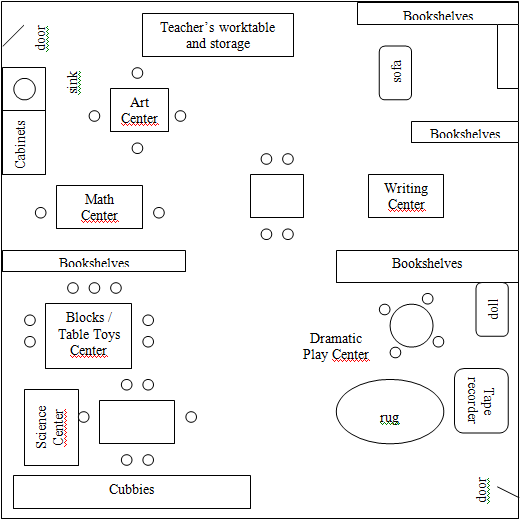Young children enrolled in the Kindergarten level enter a new stage in thinking. According to Piaget’s Stages of Cognitive Development, they step into the Pre-Operational stage which is characterized by being able to represent objects and knowledge in imitating others, playing symbolically, drawing their ideas on paper, and describing mental images of the ideas aloud.
They gain skills in conservation, which is defined as “the knowledge that the number, mass, area, length, weight, and volume of objects are not changed by physically rearranging the objects.” (Brewer 318).
This is the importance of concrete learning wherein children get to manipulate concrete materials in order to be able to think of it in abstract terms later on. Mathematical understanding is much easier for young children when they use manipulative objects.
Ruthven describes Mathematics as a hierarchal discipline. One needs to fully understand a more basic concept before moving on to more complex ones (245). For example, the operations of addition and subtraction are made easy to understand for young children with story problems and more practical activities (QCA 64).
Hence, preschools always have an array of number songs and fingerplays that tell stories with numerical concepts such as “Five Green Speckled Frogs”, “Three Blind Mice”, etc.
Mathematical learning may be effectively achieved using creative art activities. Through exploration and discovery combined with play-like hands-on experiences, children learn best.
Kostelnik & Howe contend that young children better understand concepts when they are able to interact with the real world and combine what they already know with new things they can still learn. This is when they play around with the ideas in their minds, expand it to other concepts, and make connections with other ideas. (25).
The National Endowment for the Arts explain that “Early experiences with the visual arts foster important skills while providing a sense of joy and excitement that can last a lifetime” (42). Non-academic subjects like music and the arts play a great role in representing specific forms of intelligence which are as important as academic subjects like Science or Math (Shalaway: 56).
The Learning Environment
Kindergarteners are very active and curious. Hence the physical environment they move around in should be designed considering their active nature while guiding them towards proper behavior. This is especially true in the classroom setting.
The children’s classroom should be made conducive to their learning and good behavior as well as reflect the teacher’s goals and expectations (Brewer 87). There should be enough space for them to move around and stimulating design and materials to encourage their exploration, discovery, learning, and active participation.
It should also help teachers to see everything going on so she can observe each child what they are doing and what their interests are. It should be arranged in such a way that the teacher can supervise her students well even from a distance to ensure their safety.

Kindergarten classrooms facilitate socialization with others. Furniture are arranged in clusters so children can interact and work together. At the same time there are quiet spaces to give opportunities for children to be alone when they feel like it.
Even handicapped students are accommodated so their special implements or wheelchairs or any other specialized equipment aiding them are considered so they are not constrained and are made to feel comfortable and accepted.
Kindergarten classrooms are usually partitioned with learning centers. These are specialized corners focusing on subject areas or developmental areas such as the Math area, Fine Motor Skills area, etc. Materials and activities are organized in each learning area to develop the skills planned to be developed in such areas.
For example, in the Art center, since creative skills are targeted, several art materials and tools should be abundant. At the same time, in the Math area, materials such as counting sets, puzzles, weighing scales, etc. are laid out to help for mathematical skill development.

Works Cited
Brewer, Joanne. Introduction to Early Childhood Education, Allyn & Bacon 2001. Print.
Kostelnik, Marjorie, ed., Teaching Young Children Using Themes. New Jersey: Good Year Books, 1991. Print
National Endowment for the Arts. Imagine! Introducing Your Child To The Arts, 2nd Edition. 2004. Print.
QCA. Curriculum Guidance for the Foundation Stage, QCA Foundation Stage Profit, 2000. Print.
Ruthven, Kenneth. “Ability Stereotyping in Mathematics.”. Educational Studies in Mathematics, 18. 3 (1987): 243–253. Print.
Shalaway, Linda. Learning to Teach, Scholastic Professional Books. 1998. Print.